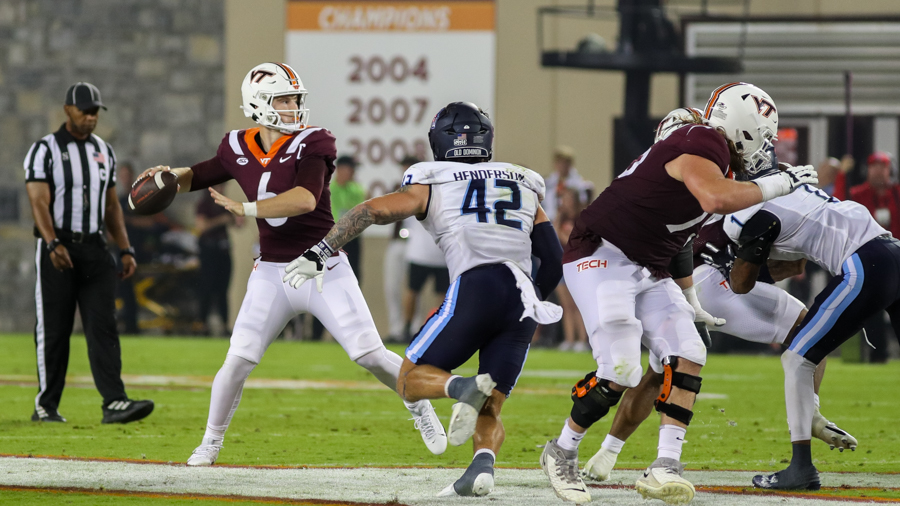It feels good to watch competent football again, doesn't it?
That was my biggest takeaway after Virginia Tech's 36-17 victory over Old Dominion in week one. Call it a "whelming" performance, if you will: the Hokies showed marked improvement from last season and visibly upgraded their talent at several positions, even though their running game execution was sloppy and quarterback Grant Wells left a couple touchdowns on the table.
In my newly-minted "Facts & Film" column, I'll dispense some thoughts from the win over ODU, focusing on big wide receiver gains, run tendencies, and some offensive line problems. Also: the new first down clock rule is the talk of the college football social media sphere. Is the rule working? Are games shorter? Will we ever hear "WHOPPER WHOPPER WHOPPER WHOPPER" again?
I am here to answer all these pressing questions.
Asserting Dominance
From a box score perspective, this was an interesting game to analyze. My biggest concern was not whether Tech could eliminate the self-inflicted mistakes that cost them last year's game; it was how much they would dominate an opponent they are clearly better than. This time around, Old Dominion certainly held their own: the Monarchs did a far better job running the ball (6.9 sack-adjusted yards per rush compared to 2.5 for the Hokies), and even had a higher success rate.
Where was the game won for Virginia Tech? Turnovers, field position, pass rush wins, and explosive passing plays. The Hokies were a +3 in the turnover margin (apropos of what I mentioned in my preseason preview), started drives on average at their own 47-yard line, were a +5 in the sack category, and saw Wells drop several dimes through the air.
The receiving corps was the group I was most relieved to see markedly improved from last year. Even physically they just looked different: 6-foot-2 Ali Jennings, 6-foot-5 Da'Quan Felton, and you could throw in 6-foot-5 TE Benji Gosnell. Jennings led the way with five receptions for 72 yards and a pair of touchdowns. In the third quarter, Wells got a man-coverage look he wanted and hit Jennings in stride on a simple go-route for a 44-yard gain, something we didn't see much of in 2022.
To continue reading Get Fully Dipped and Join The Key Players Club »
- Exclusive Content
- Interact in community forums
- Post and view comments
- Advanced site features
- No pesky display ads, only offers from TKP sponsors
- Members Only Forum

